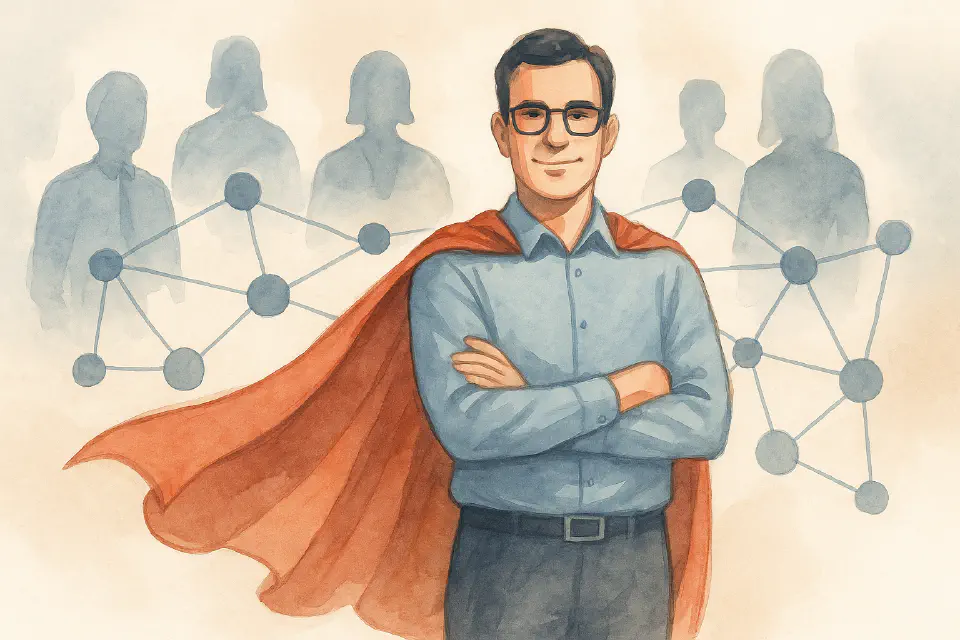
Activating Change Agent Networks
Change doesn’t scale from the top alone. You need a network of engaged employees to carry the transformation forward—from every corner of the company.
In successful HR transformations, top-down communication is not enough. For change to take root, it must be carried and amplified by individuals embedded throughout the organization—trusted colleagues who influence others, advocate for new ways of working, and help resolve friction at the ground level. These individuals are known as change agents.
What Are Change Agent Networks?
Change agent networks are structured communities of employees who support and accelerate transformation by engaging others, collecting feedback, troubleshooting resistance, and reinforcing progress in their local areas. Unlike formal leadership chains, they operate through informal influence, peer credibility, and proximity to day-to-day work.
While the term network may suggest a loose collective, in practice, these groups are often carefully designed, trained, and supported to ensure alignment and effectiveness. They complement formal governance by creating distributed capacity for change.
Why Change Agents Matter in HR Transformation
HR transformation involves not just tools and processes but mindset, behavior, and cultural shifts. These cannot be delivered through emails or workshops alone. Change agents:
- Translate strategy into day-to-day relevance
- Surface concerns and resistance early
- Build trust in transformation efforts
- Model new behaviors in real contexts
- Reduce the burden on HR and leadership
They are especially vital when transforming how employees interact with HR—new service models, tools, responsibilities, or even cultural norms around feedback, learning, or wellbeing.
How to Build a Change Agent Network
1. Identify the Right People
Not every enthusiastic employee is an effective change agent. Look for:
- Credibility among peers
- Communication skills and active listening
- Influence beyond formal role
- Openness to change
- Diversity in function, geography, seniority, and personality
Use nominations, surveys, or network analysis tools (like organizational network analysis – ONA) to surface informal influencers.
2. Define Roles and Expectations
Be clear on what change agents are (and aren’t) expected to do. Typical responsibilities include:
- Sharing updates and encouraging participation
- Providing feedback to the core team
- Supporting colleagues through change
- Escalating issues and blockers
- Modeling behaviors aligned with new ways of working
They are not project managers or “HR spies.” They should feel empowered, not burdened.
3. Train and Support Them
Provide resources, training, and recognition. This may include:
- Communication toolkits
- Change management basics
- Office hours or coaching sessions
- Peer learning circles
- Branded identity (e.g. “Change Champions”)
A good rule: don’t just ask for help—invest in their success.
4. Connect and Coordinate
Treat the network as a living system. Create channels for collaboration:
- Regular syncs or check-ins
- Slack/Teams channels
- Peer mentorship
- Spotlighting successes across the network
This builds momentum and community, especially in large or dispersed organizations.
Pitfalls to Avoid
Even well-intended networks can go wrong if not handled thoughtfully.
Other common mistakes:
- Selecting only “usual suspects” (e.g. HR or extroverts)
- Ignoring line manager dynamics
- Making the network too hierarchical or bureaucratic
- Letting it fade post-launch
Change agents need ongoing relevance, recognition, and support. Otherwise, they disengage or disappear.
Change Agents and the Bigger Picture
Change agent networks are more than tactical tools—they’re cultural infrastructure. They cultivate internal leadership, peer connection, and distributed problem-solving. When sustained, they become a force multiplier for transformation beyond HR: digitalization, agile working, inclusion, sustainability.
They also serve as feedback loops and early-warning systems—keeping change grounded in reality, not just strategy decks.
In summary, activating change agent networks is a strategic lever in HR transformation. It democratizes change, builds resilience, and bridges the gap between vision and reality. Done well, it can mean the difference between passive adoption and active ownership.
Want to transform your HR function? Don’t do it alone. Activate the network.